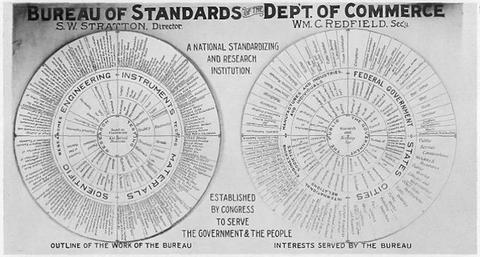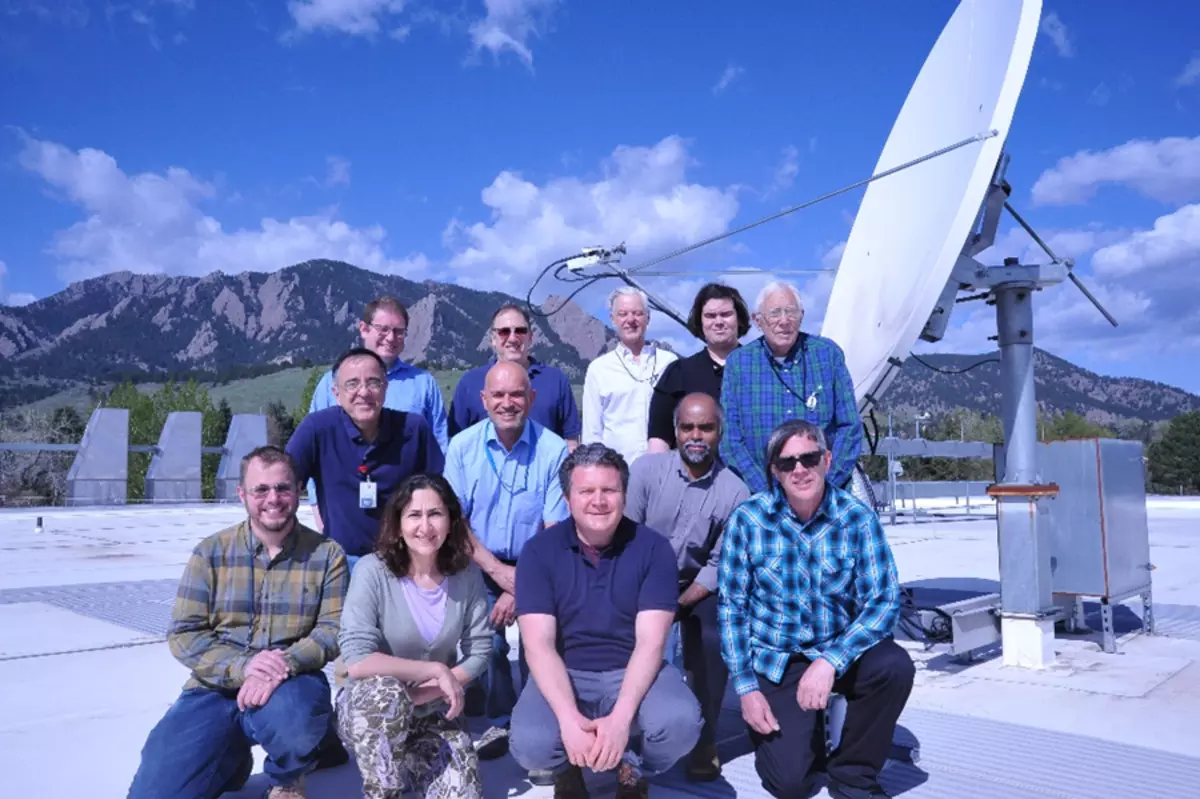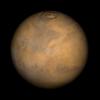One of NIST's mission essential functions is to provide the United States with official sources of time and frequency. Our group fulfills this mission by operating and continuously analyzing a large ensemble of commercial atomic clocks. Briefly, an atomic clock measures the passage of time by counting oscillations of an electronic signal kept resonant with a state transition in an atom, engineered for insensitivity to the surrounding environment or perturbing effects like magnetic field fluctuations.
The stability and robustness of the derived timing signal, called UTC(NIST), is enhanced by averaging across the clock ensemble. The accuracy of UTC(NIST) is ensured by regular comparisons with primary frequency references---devices like the cesium atomic fountain that attempt to realize a microwave frequency closely based on the definition of the International System (SI) second in terms of an unperturbed state transition in the cesium atom---and by regular comparisons with other national metrology laboratories. We keep UTC(NIST) closely aligned with the international atomic time scale Coordinated Universal Time (UTC); our typical time offsets are at the 1 nanosecond level with frequency offsets of about 1 x 10-15.
We distribute NIST time and frequency signals freely to the public (e.g. the Internet Time Service, time.gov website, WWV, WWVB, and WWVH radio stations). For customers who need UTC(NIST) at higher accuracies or that require a controlled or calibrated transfer medium, we offer remote calibration services (e.g. TMAS, FMAS) and direct links (e.g. Time over Fiber, Time over Satellite). We publish measurements of UTC(NIST) against timing signals from the Global Positioning System (GPS), other global satellite navigation systems (GNSS), and support time transfer methods using GNSS satellites as transfer oscillators. We also offer calibration services for oscillators, commercial atomic clocks, and GPS/GNSS receivers. The group supports US industry and other agencies with Collaborative Research and Development Agreements (CRADAs) and technology transfer partnerships.
Finally, the group incorporates state-of-the-art developments in time and frequency metrology, such as optical atomic clocks, and supports NIST laboratory research programs.
NBS/NIST Radio Stations: The Story of an Old Timer

This series of webpages will lead you on a journey on the history of the NBS/NIST radio stations. You can watch a video as well.
News and Updates
Projects and Programs
Publications
Awards
Press Coverage
To support time and frequency metrology throughout the Americas, the Sistema Interamericano de Metrologia (SIM) Time and Frequency Metrology Working Group (TFMWG) maintains the SIM time scale (SIMT), the first continuously maintained multi-national ensemble time scale that is generated and published in real time (updated every hour). SIMT complements the world's official time scale, Coordinated Universal Time (UTC), by providing real time support to operational timing and calibration systems in the SIM region. The stability of SIMT is superior to most SIM local time scales and SIMT also provides a good approximation of UTC timing accuracy (±15 ns).
NIST is consolidating its provision of reference instrumentation and devices into a new Standard Reference Instrumentation (SRI) program.
Contacts
Group Leader
-
(303) 497-3511
Staff
-
(303) 497-5110
-
(303) 497-6971
-
(303) 497-4414
-
(303) 497-3378
-
(303) 497-4082
-
(303) 497-7366
-
(303) 497-7881
Radio Station Staff
-
(303) 497-3914
-
(303) 497-3914
-
(808) 335-4361










